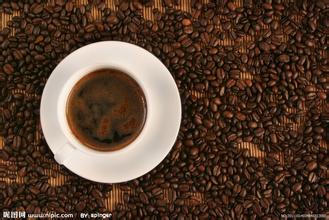Flavor description of Costa Rican Tarazhu Coffee beans introduction to the growing environment

Flavor description of Costa Rican Tarazu Coffee beans A brief introduction to the planting Environment and Origin Anchor Point
Palate: bright and varied soft fruit acids, such as oranges, berries, raspberries, etc., which softens and brings sweetness on the palate, with a rich caramel-like Body. In the middle, there are sweet hazelnuts, sweet spices, fudge, stiff flowers and cool flowers in the nose, melons, almonds, sweet limes, sun-dried fruits, roasted nuts and chocolate, full overall flavor, long-lasting and changeable finish, especially the sweetness of spices.
Costa Rica mostly uses washing treatment, and in recent years there has also been an alternative half-sun treatment (Miel) or Honey Coffee, which can be translated as "as sweet as honey" treatment. The coffee that Costa Rica claims to be "as sweet as honey" is Honey Coffee on the sack, which is quite eye-catching. It has improved the Brazilian half-sun method to increase sweetness, focusing on keeping the pectin layer glued to the pods as completely as possible, removing the peel and moving the sticky pods to an outdoor viaduct, similar to Kenyad's practice, so as not to absorb the odor and moisture of the land, then expose to the sun and air-dry for about a week or two. During this period, you have to turn the pods every hour to make them evenly dry, so that the beans can fully absorb the fruit aroma and sugar essence of the thick pectin layer, and put them into a wooden container to ripen after dehydration. It takes a lot of work, but the fruit of "honey wine" tastes as sweet as honey. The disadvantage is that the risk of this method is very high, and it is easy to mildew and rot when the weather is too wet. Costa Rica is not as dry as it is, but it dares to use the treatment of exposure for a long time, which makes people feel cold sweat, but it also reflects Costa Rican coffee craftsmanship.
Costa Rica's coffee skills are very high, regardless of breeding, planting or post-processing (washing, half-sun) is enough for all producing countries to learn from. However, the supply of famous producing areas falls short of demand, and unscrupulous operators often mix them with high-quality beans in other second-rate producing areas, and the producing areas hundreds of miles away from Tarazhu also dare to fish in troubled waters in the name of Tarazhu, so they have to be careful.
Important Notice :
前街咖啡 FrontStreet Coffee has moved to new addredd:
FrontStreet Coffee Address: 315,Donghua East Road,GuangZhou
Tel:020 38364473
- Prev

Costa Rican Candlestick Horticultural geisha Coffee Bean characteristic treatment method Grinding scale introduction Anchor Point
In 2007, American essence
- Next

Flavor description of Costa Rican Yellow Honey Coffee beans A brief introduction to the Grinding scale Variety Taste Manor
Flavor description of Costa Rican yellow honey coffee beans grinding scale varieties taste Manor introduction Anchor in 1729, coffee was introduced to Costa Rica from Cuba, and today, its coffee industry is one of the well-organized industries in the world, with an output of 1700 kilograms per hectare. Costa Rica has a population of only 3.5 million, but has as many as 400 million coffee trees, and coffee exports account for the country's total exports.
Related
- Detailed explanation of Jadeite planting Land in Panamanian Jadeite Manor introduction to the grading system of Jadeite competitive bidding, Red bid, Green bid and Rose Summer
- Story of Coffee planting in Brenka region of Costa Rica Stonehenge Manor anaerobic heavy honey treatment of flavor mouth
- What's on the barrel of Blue Mountain Coffee beans?
- Can American coffee also pull flowers? How to use hot American style to pull out a good-looking pattern?
- Can you make a cold extract with coffee beans? What is the right proportion for cold-extracted coffee formula?
- Indonesian PWN Gold Mandrine Coffee Origin Features Flavor How to Chong? Mandolin coffee is American.
- A brief introduction to the flavor characteristics of Brazilian yellow bourbon coffee beans
- What is the effect of different water quality on the flavor of cold-extracted coffee? What kind of water is best for brewing coffee?
- Why do you think of Rose Summer whenever you mention Panamanian coffee?
- Introduction to the characteristics of authentic blue mountain coffee bean producing areas? What is the CIB Coffee Authority in Jamaica?

